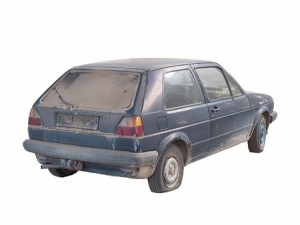Teens Less Likely to Drive Safe Cars
 A new report by researchers at the Insurance Institute for Highway Safety found that teens are more likely to drive older, smaller cars than adults, which puts them at greater risk for accident and injury.
A new report by researchers at the Insurance Institute for Highway Safety found that teens are more likely to drive older, smaller cars than adults, which puts them at greater risk for accident and injury.
According to the survey, teenagers are at a greater risk of injury during an accident than an adult counterpart who may be better protected in a newer vehicle. The IIHS said many older vehicles don’t have certain safety features like side airbags and electronic stability control. In all, the study found:
• 82 percent of teenage motorists involved in a fatal automobile accident were driving a car that was at least six years old. Only 77 percent of adults in similar accidents were driving vehicles that were at least six years old.
• 34 percent of teenage driving fatalities occurred in vehicles between six and 10 years old, 31 percent occurred in vehicles between 11 and 15 years old, and 17 percent took place in vehicles that had been on the road for at least 16 years.
• 57 percent of teens who died while driving a car that was less than three years old were driving a car classified as a “small car” or “minicar.”
Researchers say there are two main reasons for their findings. First, they suggest that teenagers who get a car soon after receiving their license are often given a family heirloom car that has been in the family for years and is often older than six years old. They also believe that teens who purchase a car are often working with a limited budget, meaning they’ll only be able to afford an older car with a lot of miles, or a newer small car that doesn’t offer the same crash protection as SUVs or larger cars.
Four Recommendations
In conjunction with their findings, the IIHS listed four recommendations for parents who want to help the new driver in their family find a safe and reliable vehicle.
Avoid Horsepower – Cars with extra horsepower can tempt teens into testing their speedometer.
Big and Heavy – Larger and heavier vehicles offer better protection during a crash.
Stability – Look for a vehicle equipped with electronic stability control, which helps a driver maintain control of the vehicle.
Safety Rating – Do some research on the vehicle’s safety rating before buying to ensure it meets your standards and expectations.
Related source: NY Times
-
5 Ways to Increase Gas Mileage
 Jul 26, 2013
Jul 26, 2013With gas prices on the rise, motorists are once again looking for ways to stretch their dollars and increase their gas mileage. To aid in their search, we compiled a list of five ways you can increase your car’s gas mileage. Drive the speed limit – Although you may not get to your destination as […]
-
The Most Reliable and Longest Lasting Cars
 Nov 19, 2014
Nov 19, 2014Bringing your car in for regular scheduled maintenance is one way to extend the life of your vehicle, but some cars are simply built to be longer lasting than others. To determine which cars were actually the most durable, a pair of researchers studied car ownership patterns and asked mechanics and other auto-professionals to evaluate cars […]
-
What is Hydrophobic Glass?
 Jul 15, 2015
Jul 15, 2015Hydrophobic glass, as the name implies for anyone versed in word origins, means that the glass is treated in such a way that it repels water. We’ve installed hydrophobic glass before, and although it’s more expensive than normal windshield glass, some drivers prefer the tempered glass. Below, we explain a little more about hydrophobic glass and […]




